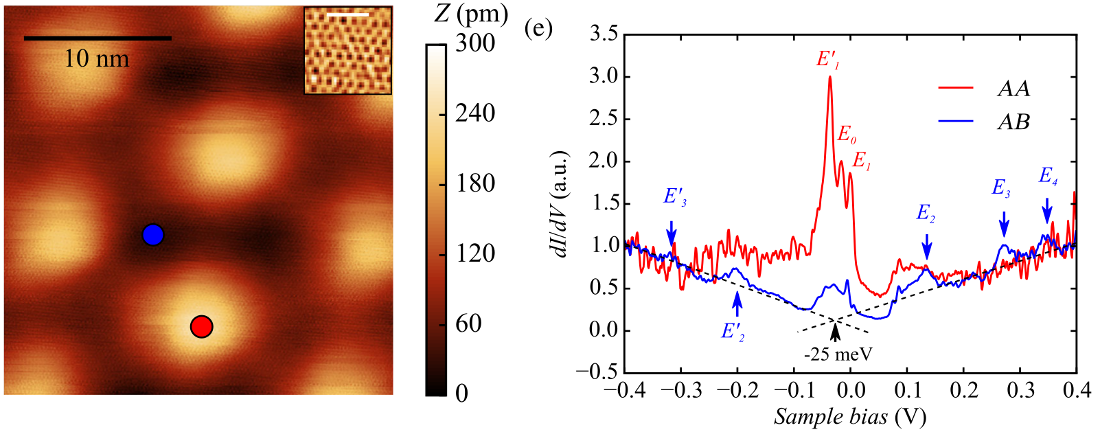
A variety of new electronic, optoelectronic and photovoltaic devices are produced by stacking different two-dimensional materials into van der Waals heterostructures. Radical effects on the electronic properties can also be achieved by stacking identical materials into van der Waals homostructures. The properties of van der Waals structures and device not only depend on the choice of materials but also on the details of the stacking which offers additional degrees of freedom. The rotation angle between the layers has been the first to be exploited exploited leading to the discovery of a large amount of new physics: van Hove singularities in twisted graphene layers (TGLs) the Hofstadter butterfly in graphene on h-BN and very recently to uncover correlated insulating and superconducting states in magic angle twisted graphene layers. Strain, originating from external stress or from interlayer interactions, is another degree of freedom.
In the present work we have studied the effect of homogeneous heterostrain on electronic properties of TGLs. Here, the layers experience different and independent homogeneous in-plane strain, a situation which has no equivalent in bulk materials where covalent bonds link atoms on both sides of the junction. Heterostrain is possible in 2D stacks because independent deformations on each side of the interface are allowed by the weak interlayer van der Waals bonding. The top figure illustrates how heterostrain influences the moiré between two rotated graphene layers.
Using our formalism to
determine quantitatively heterostrain, we have shown that a tiny amount of heterostrain has strong implications for the electronic properties of twisted graphene layers. In our case it lead to the formation of flat bands in which the strongly correlated electron physics could also develop.
The following figure shows the STM image of the twisted graphene layers that we have studied and its density of states measured in spectroscopy mode.
